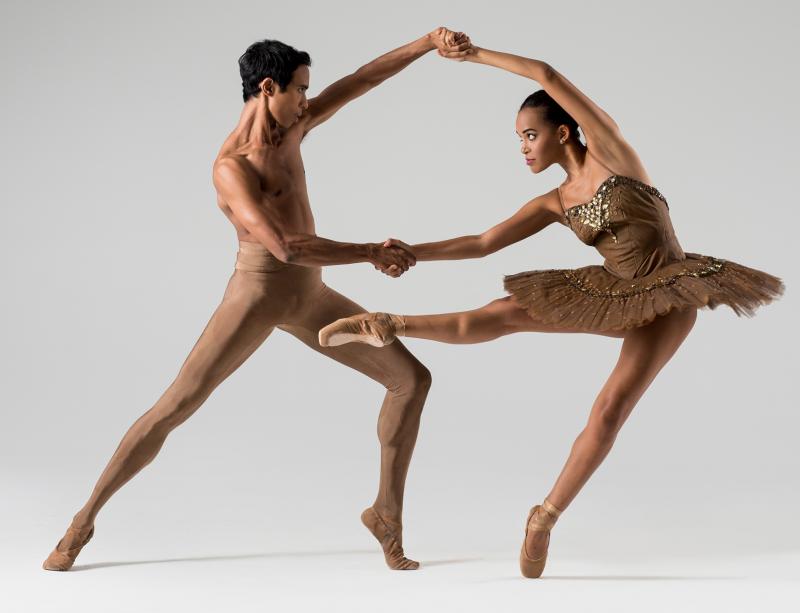Ballet. One of the hardest, structured and strict forms of dance in the world, and also the base of all other dance. In the dance world, out of hundreds of young girls who aspire to be prima ballerinas, only a handful of them make it. For Dance Theatre of Harlem Company dancer, Alison Stroming, she was one of the handfuls to not only have a successful career in ballet but to be a dancer of diversity as well.
A Budding Ballerina is Born
24-year-old Alison Stroming is a Brazilian native.
“I was adopted at eight months old and grew up in the tri-state area,” Stroming explained. “Both of my brothers danced in New York, so we moved there when I was ten.”
Stroming has been dancing since the tender age of two, which is the age that most parents start their children. Though Stroming tried other extracurricular activities, dance was always the one that stuck with her.
“I tried everything,” she said. “Cheer, gymnastics, but I loved the stage. It felt natural and dance and family are what made me feel happy. I was always so shy and scared but dance allowed me to let go and express myself without having to talk to anyone.”
Stroming has danced for endless professional companies, including the School of American Ballet at which she danced for three years, the iconic American Ballet Theatre for five years, and the New York City Ballet. All the rigorous training and long hours in the studio led Stroming to become a company dancer at the Dance Theatre of Harlem.
“We’re currently on tour,” Stroming gushed. “North Carolina, Detroit, Florida – just the United States for now.” Stroming also revealed that she is also preparing for an overseas tour in Europe.
Photo: AllBioHub
Behind the Scenes
So, what comes after hours and hours of training? After the two and a half minute solo performed at recitals, or when you dance your last recital at age 18? You hit the big leagues. By the time they graduate, every ballerina strives to receive a contract from a company.
“I graduated high school early. That’s when I remember being offered my first contract,” the 24-year-old reminisces. “It was really special. I was overseas at the time, training with the American Ballet Theatre as a level two junior. I was around 16 or 17 at the time and in Rome – that’s when I got the call. The Alberta Ballet Company offered me a contract and I had three days to accept it, all while being in Rome.”
Thankfully, that worked out for Stroming. But along with training, it can become extremely difficult to balance and maintain a social life and relationships.
“I try to keep a social life,” Stroming explains. “I have friends outside of dance, I go get my nails done, go out. It helps me relax, especially since my lifestyle is really organized. Some of my friends who are in different fields do not understand that I work hard too. They don’t understand how much work goes into the craft.”
Photo: EMaze
Diversity in Ballet
There’s no secret that there is a lack of diversity in the ballet world. There is always a tone of discouragement when it comes to ballet for African-Americans, as The Baltimore Sun describes. “They were told that their race was too muscular, too athletic, and too curvy — code words for “too sexual” — for the sylphlike innocents celebrated in such ballets as “Giselle” and “Swan Lake.”
The lack of diversity has always been a significant issue, it is brought to light after famous ballerina Misty Copeland was named the first African American principal dancer with the American Ballet Theatre.
“One of the people I look up to is Misty Copeland.” Stroming heartfeltly said. “I remember meeting her in the hallway by a water fountain. She was one of the company dancers and I was still training. We really bonded and she became my mentor.”
A “typical ballerina look” is often portrayed as someone Caucasian with long limbs and gorgeous line, and straight hair packed neatly into a bow. However, the face of ballet is changing. There is more diversity as minorities and people of color start to break into the industry.
“I do think there is a lack of diversity,” Stroming said. “Dance is evolving more, but you can always leave room for more.”
Thankfully, Stroming never let her uniqueness halt her as an insecurity, but rather she embraced it.
“I personally think my look helps me stand out. It’s unique and different. You never know what they are looking for. I don’t take anything personally though, it’s all about the right timing. I always remain positive.”
Photo: Oitotempos
Stroming’s Advice to Budding Dancers?
“It’s easy to compare yourself to the little things like social media, but just focus and always put yourself first.”
Photo: MissBish
